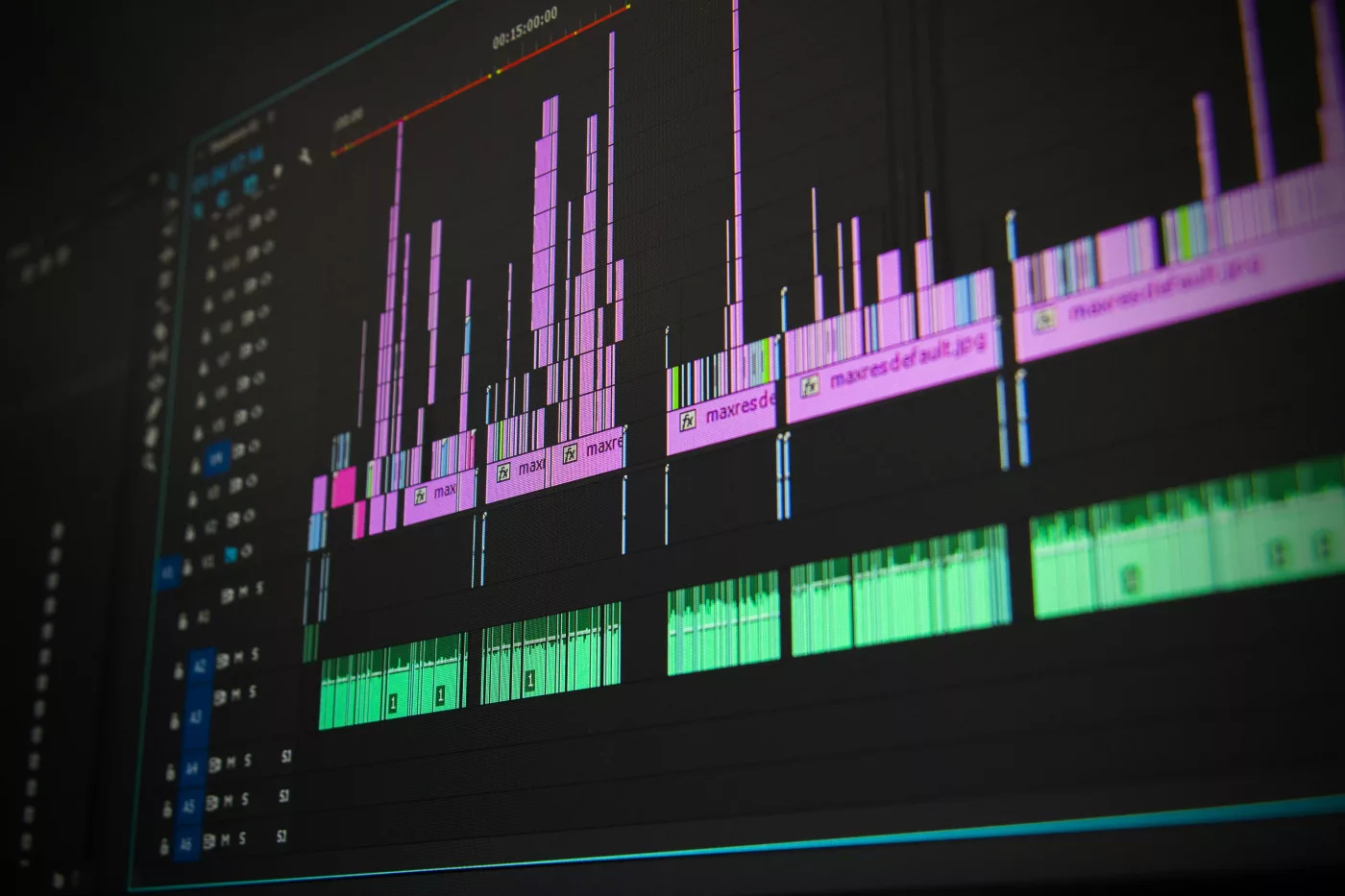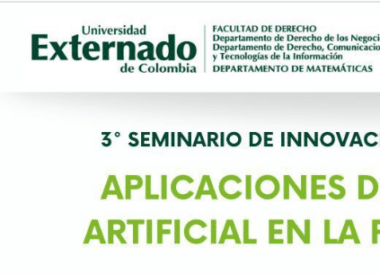31 de mayo de 2024
ARTIFICIAL INTELLIGENCE DRAFTING CONTRACTS
INTRODUCTION
A contract is considered a complex document. Contracts are governed by legal principles and regulations that vary based on jurisdiction and the subject matter of the contract. Navigating these legal frameworks requires expertise to ensure compliance and enforceability.
Contracts often involve multiple parties, each with their own interests, objectives, and concerns. Drafting a contract that adequately addresses the needs and expectations of all parties can be challenging. Contracts must cover a wide range of terms and conditions, including but not limited to, the rights and responsibilities of the parties, payment terms, performance obligations, warranties, indemnities, dispute resolution mechanisms, and termination clauses. Ensuring that all relevant aspects are addressed in sufficient detail requires careful consideration and drafting.
Contracts are essential for managing and mitigating risks associated with business transactions. Identifying potential risks and drafting provisions to allocate, minimize, or transfer these risks requires a thorough understanding of the relevant legal and business contexts. Contracts often involve complex transactions or arrangements, such as mergers and acquisitions, joint ventures, intellectual property licensing, or construction projects. These transactions may require specialized expertise and detailed contractual provisions to address unique challenges and considerations.
Contract language must be precise and unambiguous to avoid misunderstandings or disputes. However, achieving clarity can be challenging, especially when dealing with complex legal or technical concepts that may be subject to interpretation. Contracts may need to accommodate changes in circumstances, such as market conditions, regulatory requirements, or the parties’ needs and objectives. Flexibility and adaptability are essential to ensure that contracts remain effective and relevant over time.
For a contract to be legally enforceable, it must meet certain requirements, such as offer and acceptance, consideration, legal capacity, and a lawful purpose. Ensuring that these requirements are satisfied and that the contract is enforceable can be complex, especially in cross-border transactions or in specialized areas of law.
The complexity of contracts arises from the need to balance legal requirements, business objectives, risk management considerations, and the interests of multiple parties in a comprehensive and enforceable document. Effective contract drafting requires expertise, attention to detail, and careful consideration of various factors to achieve the desired outcomes while minimizing potential risks and uncertainties.
COMPLEXITY OF CONTRACTS UNDER THE GAZE OF DIFFERENT LEGAL SYSTEMS
Contracts in common law systems, such as those found in the United States, the United Kingdom, and other English-speaking countries, exhibit several key differences from contracts in continental law systems, which are prevalent in many European, Asian and Latin American countries.
In common law systems, judicial decisions and precedents play a significant role in shaping contract law. Courts rely on prior case law to interpret contracts and establish legal principles. In contrast, continental law systems often prioritize statutory law and legal codes over judicial precedents.
Common law contracts typically have fewer formalities. While some contracts may need to be in writing to be enforceable (such as contracts for the sale of land), many contracts can be formed orally or even implicitly through the conduct of the parties. In contrast, continental law systems may require more formalities, such as notarization or registration, for certain types of contracts to be valid.
Common law systems generally emphasize the principle of freedom of contract, allowing parties significant flexibility in negotiating and drafting their agreements. As long as a contract meets certain basic requirements (e.g., offer, acceptance, consideration), parties have broad discretion to include terms and conditions as they see fit. In continental law systems, contracts may be subject to more regulatory oversight and may be required to comply with statutory provisions or public policy considerations to a greater extent.
Common law courts tend to interpret contracts based on the plain meaning of the language used, considering the intentions of the parties and the context of the agreement. In continental law systems, courts may take a more holistic approach to contract interpretation, considering not only the literal text but also the parties’ intentions, the purpose of the contract, and other relevant factors.
While both common law and continental law systems provide remedies for breach of contract, the specific remedies and procedures may differ. For example, common law systems typically offer remedies such as damages, specific performance, or injunctions. Continental law systems may provide similar remedies but may also include additional options such as penalty clauses or termination of the contract by operation of law.
Continental law systems often have standardized contract forms or model contracts for certain types of transactions, especially in commercial contexts. These standardized contracts may be prescribed by law or industry practice and may provide greater predictability and efficiency in contract formation and interpretation.
To sum up, while both common law and continental law systems recognize the importance of contracts in facilitating commercial transactions and regulating relationships between parties, they differ in their approach to contract formation, interpretation, enforcement, and remedies. Understanding these differences is essential for businesses and individuals engaging in cross-border transactions or operating in jurisdictions with different legal systems
COMPLEXITY DRAFTING A CONTRACT
Drafting a contract can pose various challenges, especially if the parties are aiming for clarity, comprehensiveness, and legal soundness. One of the most significant challenges is ensuring that the language used is precise and unambiguous. Ambiguity can lead to misunderstandings or disputes later on.
Contracts must comply with relevant laws and regulations, which can vary depending on the jurisdiction and the subject matter of the contract. Ensuring legal compliance requires careful research and attention to detail. Failing to address all necessary terms and conditions can leave gaps in the contract, potentially leading to misunderstandings or disputes.
Some contracts involve complex legal or technical concepts that can be challenging to explain clearly and concisely. Drafting a contract often involves negotiation between parties with different interests and objectives. Balancing these interests while protecting your own can be difficult.
While boilerplate language (standardized, non-negotiable terms) can save time, using it without customization can lead to clauses that are irrelevant or inappropriate for the specific contract. Lack of experience or expertise in drafting contracts can result in poorly written agreements that fail to achieve their intended purpose.
Contracts should be drafted with consideration for potential changes in circumstances, such as market conditions, regulatory changes, or changes in the relationship between the parties. A contract must be enforceable to be legally binding. Failing to meet the requirements for enforceability can render the contract invalid or unenforceable.
Effective communication between the parties involved in drafting the contract is essential to ensure that all parties’ intentions and expectations are accurately reflected in the agreement. The intention of the parties is a fundamental principle underlying the formation of an enforceable contract. Known as “meeting of the minds” or “consensus ad idem”, this principle holds that for a contract to be valid and enforceable, there must be a mutual understanding and agreement between the parties regarding the essential terms of the contract.
The process of contract formation typically involves one party making an offer to enter into a contract and another party accepting that offer. For a valid acceptance to occur, the accepting party must intend to be bound by the terms of the offer. The parties must agree on the essential terms of the contract, such as the subject matter, price, quantity, and any other material terms. While minor details may be left open or subject to negotiation, there must be a meeting of the minds on the essential aspects of the agreement.
In many legal systems, including common law jurisdictions, for a contract to be enforceable, the parties must have the intention to create legal relations. This means that they must intend for their agreement to be legally binding and enforceable by a court of law. The parties must enter into the contract freely and voluntarily, without duress, fraud, undue influence, or mistake. If one party’s consent is obtained through coercion or deception, the contract may be voidable at the option of the aggrieved party.
While the subjective intentions of the parties are relevant, courts generally apply an objective standard to determine whether a contract has been formed. This means that the court will assess the parties’ actions and communications from the perspective of a reasonable person to ascertain whether there was a mutual understanding and agreement.
In summary, the intention of the parties is a foundational principle in contract law, emphasizing the importance of mutual assent and agreement in the formation of a valid and enforceable contract. When the parties’ intentions are clear, and all legal requirements for contract formation are met, the resulting contract is typically binding and enforceable by law.
INTERPRETING A CONTRACT A TRADITIONAL HUMAN TASK
Interpreting a contract can be difficult for several reasons, primarily due to the complexity of language, the potential for ambiguity, and the need to balance competing interests of the parties involved. Here are some reasons why interpreting a contract can be challenging:
Contracts often contain technical, legal, or industry-specific language that may be difficult for non-experts to understand fully. Contract language may be ambiguous or open to multiple interpretations, leading to disagreements between the parties about the meaning of specific terms or provisions.
The interpretation of a contract may depend on the context in which it was drafted, including the intentions of the parties, the purpose of the contract, and the surrounding circumstances at the time of formation. Not all terms of a contract are explicitly stated; some terms may be implied based on custom, industry practice, or the presumed intentions of the parties.
Over time, circumstances may change in a way that affects the interpretation of a contract. For example, changes in market conditions, technology, or regulatory requirements may impact the relevance or applicability of certain contract provisions.
To address these challenges, legal systems have developed various methods and principles for interpreting contracts.
Literal Interpretation: This method involves giving effect to the plain meaning of the words used in the contract, without considering extraneous factors or intentions of the parties beyond the text itself.
Contextual Interpretation: Courts may consider the surrounding circumstances, the purpose of the contract, and the intentions of the parties in interpreting ambiguous or unclear contract terms.
Contra Proferentem Rule: Under this rule, any ambiguity in a contract is construed against the party who drafted the contract (the “drafter”). This rule encourages parties to draft contracts with clarity and precision.
Custom and Usage: Courts may consider industry customs, trade practices, or course of dealing between the parties when interpreting contract terms, especially when the contract is silent or ambiguous on a particular issue.
Interpretative Presumptions: Legal systems may apply certain presumptions or default rules to resolve ambiguities or gaps in contract language. For example, contracts are presumed to be made in good faith, and parties are presumed to have intended reasonable and lawful outcomes.
Extrinsic Evidence: In some cases, courts may allow parties to introduce extrinsic evidence, such as prior negotiations, communications, or drafts of the contract, to aid in the interpretation of ambiguous contract terms.
These methods and principles are used by courts and arbitrators to interpret contracts and resolve disputes when the parties are unable to agree on the meaning of specific contract provisions. However, contract interpretation can still be subjective, and outcomes may vary depending on the specific facts and circumstances of each case.
ISSUES OF ARTIFICIAL INTELLIGENCE DRAFTING CONTRACTS
Artificial intelligence (AI) can greatly aid mechanical task drafting documents. AI-powered drafting tools can analyze large sets of data and generate drafts much faster than humans. This saves time and increases productivity.
AI systems can reduce errors in drafting documents by identifying inconsistencies, suggesting improvements, and ensuring compliance with regulations or standards. With AI, mechanical task drafting can be partially or fully automated. Routine tasks such as formatting, numbering, and referencing can be handled by AI algorithms, freeing up human resources for more creative or complex tasks.
AI can tailor drafts to specific requirements or preferences. By analyzing past documents and user feedback, AI systems can generate drafts that align with the user’s style, tone, and formatting preferences. AI drafting tools can be integrated with other software systems, such as CAD (Computer-Aided Design) software, project management tools, or document management systems, streamlining the drafting process and improving workflow efficiency.
AI systems can continuously learn from user interactions and feedback, improving their drafting capabilities over time. This iterative learning process helps enhance the quality and accuracy of drafted documents. AI offers significant benefits in mechanical task drafting by improving speed, accuracy, customization, and integration capabilities, ultimately leading to more efficient and effective document creation processes.
Drafting contracts is traditionally a task performed by humans, typically lawyers or legal professionals, who possess the necessary legal knowledge and expertise to ensure that the contract is legally enforceable and effectively represents the parties’ intentions and interests.
AI-powered tools can automate the process of generating standard contracts or templates, saving time and reducing the risk of errors. AI systems can analyze and interpret natural language text, helping to identify potential issues, inconsistencies, or ambiguities in contract language.
AI platforms can assist in legal research by quickly analyzing vast amounts of legal data and providing relevant information on laws, regulations, and precedents that may affect the contract. AI can analyze existing contracts to extract valuable insights, such as common clauses, trends in negotiations, and potential risks.
For contracts involving parties from different linguistic backgrounds, AI-powered translation tools can help ensure that the contract is accurately translated into the appropriate languages.
While AI can provide valuable assistance in the contract drafting process, it is essential to recognize its limitations. AI tools are not a substitute for human judgment, especially in complex legal matters where nuanced interpretation and understanding of context are crucial. Therefore, while AI can streamline certain aspects of contract drafting, human oversight and review remain essential to ensure the quality and legality of the final document.
POTENTIAL MISUNDERSTANDINGS OF ARTIFICIAL INTELLIGENCE INTERPRETING CONTRACTS
Artificial intelligence (AI) interpreting human intention can lead to various potential misunderstandings.
AI might interpret human intentions based solely on the text or data it receives, without understanding the underlying context or nuances. This could lead to misinterpretations of sarcasm, humor, or metaphorical language.
AI systems may unintentionally inherit biases present in the data they were trained on. This could result in misinterpreting intentions based on race, gender, or other demographics, leading to unfair outcomes.
AI may generalize human intentions based on limited data, which can result in stereotyping or misrepresentation of individuals or groups.
Privacy Concerns: AI interpreting human intentions might lead to privacy concerns if it accesses and analyzes sensitive personal data without consent or proper security measures.
AI might not be equipped to understand the cultural context behind human intentions, leading to misinterpretations, especially in multicultural or international settings.
Incomplete Information: AI systems may misinterpret human intentions when the information provided is incomplete or ambiguous, leading to incorrect assumptions or actions.
AI interpreting human intentions raises ethical dilemmas, such as in situations where the AI must prioritize conflicting intentions or values, potentially leading to unintended consequences.
AI may struggle to comprehend the emotional aspects of human intentions, such as empathy or compassion, which are essential for understanding complex human interactions.
AI may misinterpret human intentions when faced with novel or unforeseen circumstances, as it relies on pre-defined patterns and may struggle to adapt to new situations.
Addressing these potential misunderstandings requires ongoing research and development in AI ethics, bias mitigation, context awareness, and human-AI interaction design to ensure that AI systems accurately understand and respect human intentions.
CONCLUSIONS
In summary, while AI can be a valuable tool in contract drafting, it should complement rather than replace human expertise. Human drafters bring essential qualities such as judgment, creativity, ethics, and accountability to the process, ensuring that contracts effectively serve the needs of all parties involved.
Humans should retain control of drafting contracts instead of allowing AI to independently draft them. Contract drafting often requires a deep understanding of legal principles, industry norms, and specific circumstances. While AI can assist in generating templates or suggesting clauses, it may struggle to grasp the nuanced contexts and complexities involved in drafting contracts tailored to individual needs.
Contracts can involve subtle language choices and legal interpretations that may not be straightforward for AI to navigate. Human drafters can employ their judgment and experience to clarify ambiguous terms and anticipate potential disputes, ensuring that contracts accurately reflect the parties’ intentions.
Contract drafting sometimes demands creative solutions to address unique scenarios or emerging issues. While AI can analyze existing contracts and generate standardized clauses, it may lack the capacity for innovative thinking and problem-solving that human drafters possess.
Drafting contracts often involves ethical considerations and moral judgments that go beyond legal rules and precedents. Human drafters can weigh ethical implications, negotiate fair terms, and ensure that contracts align with broader societal values, which may be challenging for AI to replicate.
Contract negotiations are not merely about legal terms but also about building and maintaining relationships between parties. Human drafters can employ communication skills, empathy, and intuition to foster collaboration and trust, enhancing the likelihood of successful agreements. Ultimately, humans are accountable for the contracts they draft. While AI can assist in the drafting process, final responsibility for the accuracy, legality, and consequences of contracts should rest with human professionals who can exercise judgment and accept liability.
Contract drafting must adhere to various legal and regulatory requirements, which can vary depending on jurisdiction and industry. Human drafters can stay updated on legal developments, compliance standards, and best practices, ensuring that contracts meet all necessary legal obligations. Human drafters can conduct thorough quality control and review processes to identify errors, inconsistencies, and potential risks in contracts before finalization. While AI can assist in automating certain aspects of review, human oversight is essential to ensure the overall quality and accuracy of contracts.
Artículos Recientes
¡Ya está disponible el caso! Segunda versión del Concurso Laboratorio de Estrategia Legal #LSL
Invitamos a los estudiantes de pregrado y postgrado de todas las carreras a presentar [...]
Masterclass Legal Operations: Transformando la Función Legal Empresarial de Guardián de Riesgos a Creador de Valor.
El Departamento de Derecho de los Negocios y la Facultad de Administración de Empresas [...]
Conclusión del Proceso de Reforma al Investor-State Dispute Settlement
En la semana del 12 de julio de 2023, durante la sesión anual de [...]
El Departamento de Derecho de los Negocios de la Universidad Externado de Colombia abre convocatoria para la vacante de Asistente de Investigación
¡Sé parte de nuestro equipo de trabajo! Perfil del cargo: Asistente de Investigación Apoyar [...]
Docente del Departamento de Derecho de los Negocios participó en el libro Blanco de la Asociación de Derecho Internacional
La Asociación de Derecho Internacional (ADI), una de la organizaciones más antiguas y prestigiosas [...]
CRYPTO IN COLOMBIA: PROSPECTIVE 2022
By: Daniel Peña Valenzuela The volatility of the main cryptocurrencies seems to be once [...]
Convocatoria de Monitores.
El Departamento de Derecho de los Negocios se complace en anunciar la apertura para [...]
¿Se avecina una regulación de la Franquicia por parte del Gobierno? ¿O lo impedirá la Corte Constitucional?
Por: Juan Miguel Álvarez* y Diana Marcela Araujo* En diciembre del 2020, el congreso [...]
Ciclo de seminarios de Innovaciones en Justicia Digital: un espacio desde la academia que replantea el futuro del sistema de justicia.
El Seminario en Innovaciones en Justicia Digital es un evento de la Universidad Externado [...]
Rostros de mentira: Retos legales producidos por las ‘Deepfakes’
Palabras clave: Deepfake, IA, contenidos audiovisuales, redes generativas adversarias, derecho probatorio, intimidad personal. Una [...]
Memorias: Tercer seminario de innovaciones en la justicia digital- aplicaciones de la inteligencia artificial en la práctica judicial.
El pasado 19 de septiembre de 2024, las instalaciones de la Universidad Externado fueron [...]
Celebramos la realización del 40º Congreso Nacional de Derecho Comercial: Novedades y retos de la contratación mercantil y del arbitraje comercial
El pasado 30 de octubre, en Medellín, se celebró el 40º Congreso Nacional de [...]


















